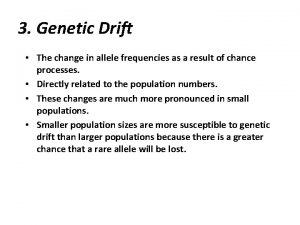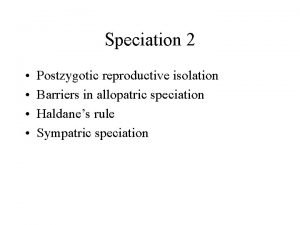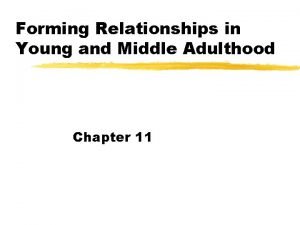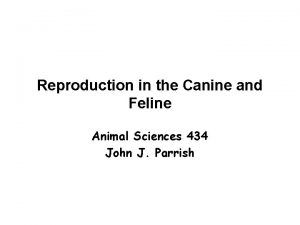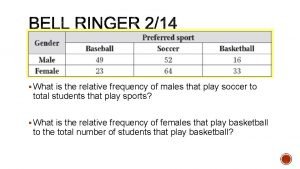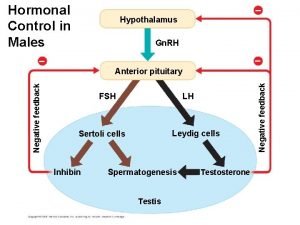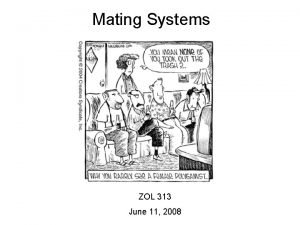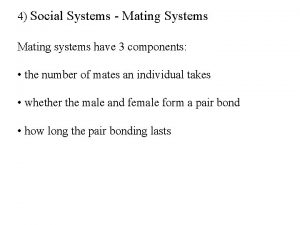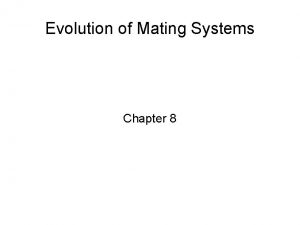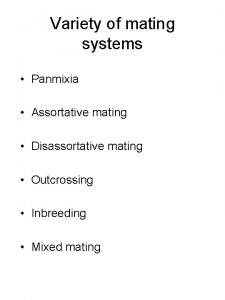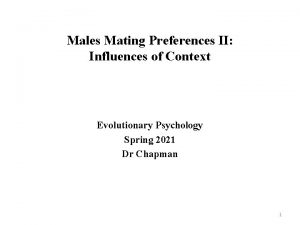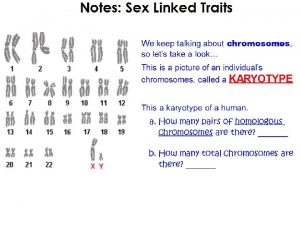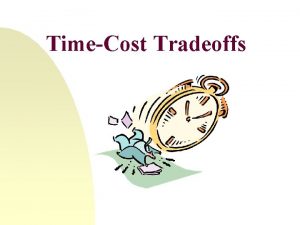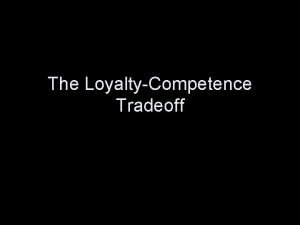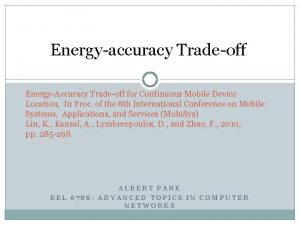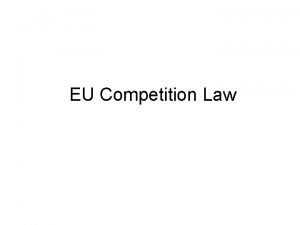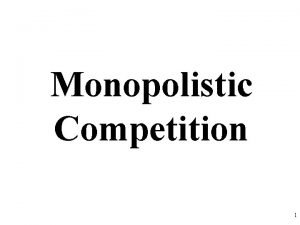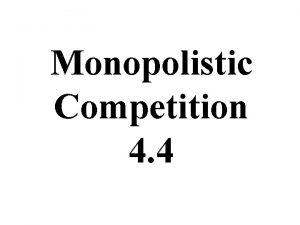Do coercive males tradeoff mating for competition when
























- Slides: 24

Do coercive males trade-off mating for competition when faced with multiple competitors? Hufsa Ali, Dr. Raelynn Deaton Haynes Department of Biological Sciences St. Edward’s University

Male-Male Competition

Introduction ● Poeciliid family o o live-bearing fish internal fertalization → sexual selection

Introduction ● Gambusia genus o G. affinis § coercive mating system


Understanding the Mating System ● Primarily coercive mating rather than courtship behaviors. ● Female resistence.


Understanding the Mating System: Size Source: Deaton, et al.

Understanding the Mating System Persistence of smaller males → reproductive success among smaller males. ● Male size → mating techniques o o Aggressive vs. sneaky copulation

Study Objectives ● Determine male density threshold at which large male advantage begins to break down. ● Size matching. ● Identify density at which males become primarily concerned with competing rather than with mating.

Predictions Mating Behaviors • Trade-off between mating and competition comp matin g Competitor Density

Predictions • Trade-off between mating and competition. • Point at which large-male competition allows small male mating.

Behaviors • • Chasing Bites and nips Gonopodial displays Gonopodial thrusts

Method • Behavior observations in social situations with varying male density. • Tracked aggressive and mating interactions of single males across all densities, towards both female and other males. • Looked for behavioral trends correlating to density changes.

Method


Results • Mating behaviors decrease with increasing male density.

Results • Aggressive behaviors among males does not change.

Results • No indication of trade-off between behaviors.

Results r 2=0. 28, df=83, p<0. 001 • Strong correlation between mating and competition behaviors as density increases. r 2=0. 46, df=83, p<0. 001

What does this mean? • There is no trade-off between mating behaviors and inter-male aggression. There is a correlation between occurrences of both behavior types. • The density at which this behavior trade-off occurs has not been tested yet.

Future Work • Continue current experiments on trade-off threshold with larger densities. • Size-ratio study. • Both studies on sister species, G. geiseri.

Acknowledgements ● ● ● TG Public Benefit Grant Program Dr. Raelynn Deaton Haynes Dr. Richard Kopec James Stewart Jacqueline Chisolm Aaron Haynes

 Non random mating
Non random mating Assortative mating
Assortative mating Assortative mating
Assortative mating Canine mating cont
Canine mating cont Bias variance tradeoff
Bias variance tradeoff Architecture tradeoff analysis method
Architecture tradeoff analysis method The key tradeoff featured in the compromise of 1877
The key tradeoff featured in the compromise of 1877 Rules of consent
Rules of consent The british coercive acts closed boston
The british coercive acts closed boston Rational persuasion
Rational persuasion How do coercive and noncoercive paraphilias differ?
How do coercive and noncoercive paraphilias differ? The coercive force in a ferromagnetic material is
The coercive force in a ferromagnetic material is Coercive acts pictures
Coercive acts pictures Magnetic flux units
Magnetic flux units Characteristic of monopoly
Characteristic of monopoly Perfect competition vs monopolistic competition
Perfect competition vs monopolistic competition Pure competition vs monopolistic competition venn diagram
Pure competition vs monopolistic competition venn diagram Perfect competition vs monopolistic competition
Perfect competition vs monopolistic competition Hva måles elektrisk spenning i
Hva måles elektrisk spenning i Factors affecting spermatogenesis ppt
Factors affecting spermatogenesis ppt Http://www.cellsalive.com/meiosis.htm
Http://www.cellsalive.com/meiosis.htm What is the relative frequency for males ?
What is the relative frequency for males ? Fccla star event dress code images
Fccla star event dress code images Hypothalamus
Hypothalamus Mia malemo
Mia malemo
